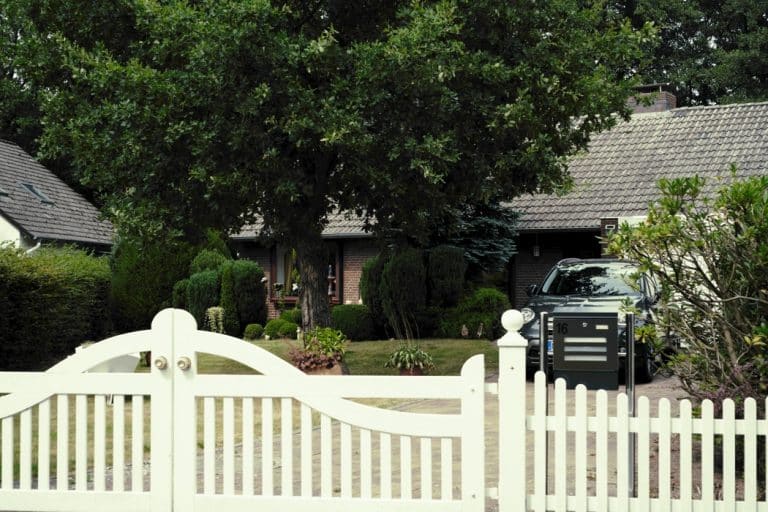As winter starts to leave and the days grow warmer, your yard might be looking dull and worn, with faded patches of grass and soil that hasn’t had much care in a while—but that’s to be expected after months of cold, snow, or frost.
Your lawn might not seem like a big deal, but it actually plays a big part in how your whole home looks and feels, since a fresh, green yard makes everything around it seem neater and more welcoming.
In this guide, I’ll show you steps that are simple and effective, and you won’t need expensive tools or help from someone else to follow them—just a little time, some patience, and a bit of effort each week.
These are the same things I’ve done with my own lawn for years, and I can tell you they really work if you start early and keep at it through the season.
So let’s get going and help your yard bounce back strong so it looks fresh and full by the time summer gets here.
Importance of Spring Lawn Care
Your lawn has been resting all winter long, and now that spring is here, it’s finally waking up—hungry for nutrients, sunlight, and a little bit of care to help it grow strong and full again.
Taking care of your lawn in spring isn’t just about making it look nice—it’s about building a strong base that can stop weeds from spreading, help grass fight off illness, and keep it green and full even when the summer heat shows up.
One of the biggest mistakes people make is waiting too long to start. By the time brown spots and weeds show up, the damage has already started, and it’s harder to fix. That’s why spring is the perfect time to get ahead of those problems before they spread and take over.
Right now, your soil is in the best shape to bounce back from winter, thanks to cooler days, soft rains, and mild temperatures that help grass roots grow deeper and stronger than usual.
When your lawn is thick and healthy, it does more than just look good—it also helps the ground hold water better, keeps dirt from washing away, and even cools down your yard during the hottest parts of summer.
Tips for Spring Lawn Care
Spring is the best time to help your lawn recover from winter and grow strong for the year ahead. These simple tips will guide you through what to do now so your grass stays thick, green, and healthy all season.
1. Start with a Clean Slate

Before anything else, you should walk around and remove all the branches, leaves, and junk left behind from winter storms.
These things block sunlight and hold in moisture, which can cause disease and rot. Use a plastic rake and gently clear the surface without hurting new grass. I always pay extra attention to spots where snow stayed for a long time—they often have thick mats of grass that need lifting.
Don’t skip corners or spaces under bushes where leaves pile up. Cleaning your lawn now helps it breathe and also shows you which spots need fixing later.
2. Check Your Soil

Healthy grass starts with healthy soil, and spring is the right time to check what’s happening under the surface.
Use a test kit from any garden store to learn your soil’s pH level and what nutrients might be missing. Grass usually grows best with a pH between 6.0 and 7.0, so if the test shows your soil is too acidic, add lime. If it’s too alkaline, use sulfur.
The test will also tell you if you’re low on nitrogen or other nutrients. Testing now saves you money and helps you avoid putting down the wrong products later.
3. Aerate Your Lawn

Soil gets packed down over time, especially where people walk or play a lot. That makes it hard for water and air to get to the roots.
Aerating fixes this by poking holes all over the yard. These holes help your lawn get the air, water, and food it needs. Rent an aerator for large spaces or use a manual one for smaller yards.
Try to aerate when the soil is damp but not soaked, and focus on places that get the most foot traffic. The little dirt plugs left behind will break down on their own in a week or so.
4. Mow at the Right Height

Cutting your grass too short may look neat at first, but it weakens the grass and lets weeds move in. Different grasses need different mowing heights, so learn what your type needs.
Cool-season grasses like to be a bit taller, while warm-season grasses can be shorter. Taller grass grows deeper roots and holds moisture better. Never cut more than one-third of the grass at a time. Keep mower blades sharp to avoid tearing the grass.
I tend to change the mowing pattern every week so the grass doesn’t lean in one direction and get weak over time.
5. Fertilize for Healthy Growth

Your lawn is hungry after winter, but feeding it too much too soon can do more harm than good. Use a slow-release fertilizer with a balanced mix of nutrients, and follow the directions on the label.
Apply the first round in early spring and the second about six weeks later. Fertilizing when the grass is dry but rain is expected works best. It helps the nutrients sink in without burning the grass.
If rain isn’t coming, water lightly after fertilizing. Organic options Feed the soil slowly and help long-term health without harming the environment.
6. Water Properly

Watering the right way makes a big difference in how your lawn grows. Most yards need 1 to 1.5 inches of water per week, including rain.
Water deeply two to three times a week instead of a little bit every day. Early morning watering works best—it gives the grass time to dry and prevents disease. Use tuna cans to measure how much water your sprinklers give.
Look for signs like mushrooms or soggy spots to avoid overwatering. Dry lawns turn bluish-gray and don’t spring back when stepped on, and new grass seeds need lighter, more frequent watering until they grow.
7. Seed Bare Spots

Winter leaves behind thin and bald spots in my garden, so I fill them in during this time before weeds take over. Simply rake away the dead grass and loosen the soil. Add some topsoil or compost, and then spread the seed evenly.
Choose a seed that matches your lawn. Lightly press the seed into the soil—don’t bury it too deep, because it needs light to sprout.
Water gently and often until the grass is tall enough to mow, but avoid walking on these areas until they’re strong. Fixing bare spots early gives your yard a fuller look and keeps weeds from moving in later.
8. Control Weeds Early

Weeds fight your grass for water and space, so it’s smart to stop them before they spread. Use a pre-emergent weed blocker in early spring before weed seeds grow.
For weeds already there, treat just those spots instead of the whole lawn. Pull weeds by hand after rain for easier removal. Sunny, dry days are best for spraying, but keep in mind that strong, healthy grass makes it harder for weeds to grow in the first place.
You can also try natural weed control options like corn gluten meal or vinegar for small paths or garden edges.
9. Overseed Your Lawn

Even if your lawn looks okay, adding fresh seed helps it grow thicker and keeps weeds out. Do this after aerating so the seeds fall into the holes and touch the soil.
Cut your lawn a little shorter first, then spread seed evenly with a spreader. Rake lightly to help the seed settle. Keep the lawn damp until the new grass grows strong enough to mow.
Don’t use weed killers after seeding, or they’ll stop the new grass from growing too. Overseeding every spring keeps your lawn full and healthy year after year.
10. Trim Your Edges

Neat edges give your lawn a clean, finished look without much effort. Use an edger to cut a straight line between the lawn and sidewalks or garden beds.
For already edged areas, I recommend using a string trimmer turned sideways. Cutting a slight V-shape into the edge keeps grass from growing over. After trimming, sweep or blow away any loose dirt. Trimming before mowing helps you clean up faster.
For problem areas, install edging strips to stop grass from creeping into flower beds. Clean edges make even average lawns look well cared for.
11. Mulch Flower Beds and Gardens

Mulch helps stop weeds and holds moisture in garden beds near your lawn. Start by pulling out old mulch and weeds.
Spread new mulch about 2–3 inches deep, and keep it a few inches away from plant stems and tree trunks to prevent rot. Use bark chips, pine straw, or shredded leaves—they break down slowly and improve your soil. Stretch mulch all the way to the edges for a smooth look.
You can also add fabric under mulch to block weeds even better. Refresh mulch each spring to keep your beds neat and healthy.
12. Prevent Lawn Diseases

Wet spring weather can lead to fungal problems, especially if the grass stays wet too long. Avoid evening watering—early morning works better.
Grass clippings can stay unless there’s a disease, since they return nutrients to the soil. Check for thatch buildup and remove it if it’s thicker than half an inch. Thatch blocks water and air from reaching roots. Prune shrubs and remove clutter so the air flows freely.
If you’ve had issues in the past, use a safe fungicide early on. Keeping grass healthy and dry helps prevent many common problems.
13. Check Your Irrigation System

Make sure your sprinkler system works well before warm weather arrives. Look for heads that are broken or spraying in the wrong direction.
Run each zone and adjust as needed. Sprinklers should slightly overlap for full coverage. Change your timer settings for spring watering—less often than in summer. Smart timers save water by using weather data. Check that drip systems and rain sensors are working too.
Fixing these small problems now saves water and keeps your lawn healthy all season. Don’t wait until your grass turns brown to find out there’s a problem.
14. Add a Layer of Compost

Spreading a thin layer of compost adds good stuff to your soil and helps your lawn grow better. Apply compost after aerating so it can fall into the holes.
Spread about ¼ to ½ inch across your lawn. Use a broom or rake to work it down into the grass. After a rain or light watering, the compost will settle. It feeds your lawn slowly and improves how your soil holds water.
You can use homemade compost or buy it from a garden center since it’s especially helpful for older lawns or ones in poor soil.
15. Monitor for Pests

As the weather warms up, pests like grubs and chinch bugs start to show up. Check for grubs by lifting a piece of sod—if you see more than 5 in one square foot, it’s a problem.
Chinch bugs cause brown spots and are hard to see unless you part the grass. For a safer option, avoid using sprays that kill helpful bugs and birds. Let nature help—birds love eating pests.
You can also use beneficial bugs or safe treatments like nematodes. A healthy lawn can handle a little pest damage and still look good.
Conclusion
Taking care of your lawn in spring helps your yard stay green, full, and strong through the whole season.
These tips work together to build a lawn that isn’t just nice to look at—but is also healthy from deep in the ground all the way up to the grass blades.
You don’t have to do everything at once. Start small. If you focus on a few important things—like mowing at the right height, watering deeply, and feeding your grass the right way—you’ll still see big changes.
The best part is that a strong lawn needs less work later. Thick, healthy grass stops weeds and bugs from taking over. It also holds up better during heat and heavy rain.
Start early, stay consistent, and your lawn will do most of the work for you. You’ll be proud every time you step outside.
What has helped your lawn the most in spring? Share your tips and wins in the comments!













